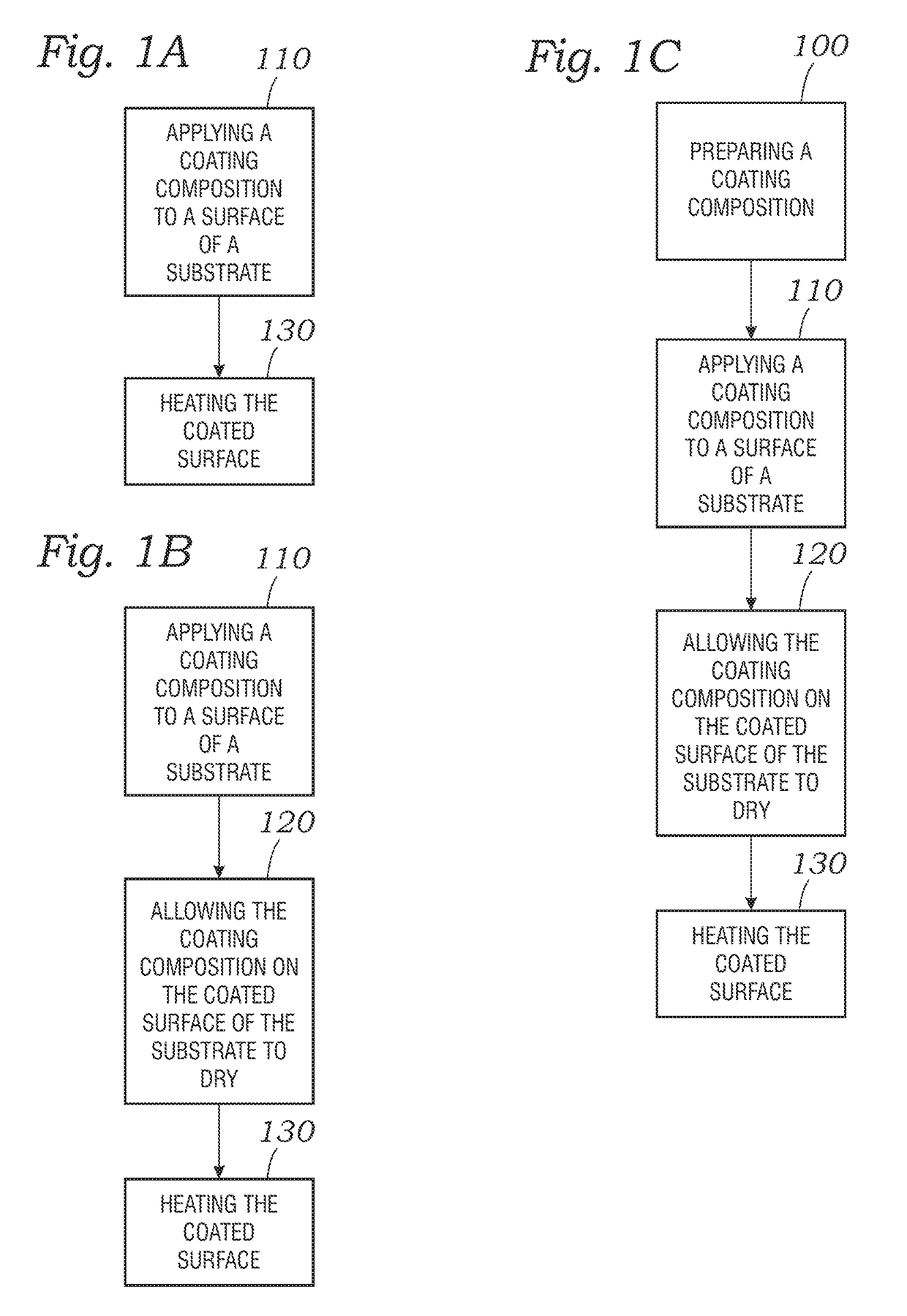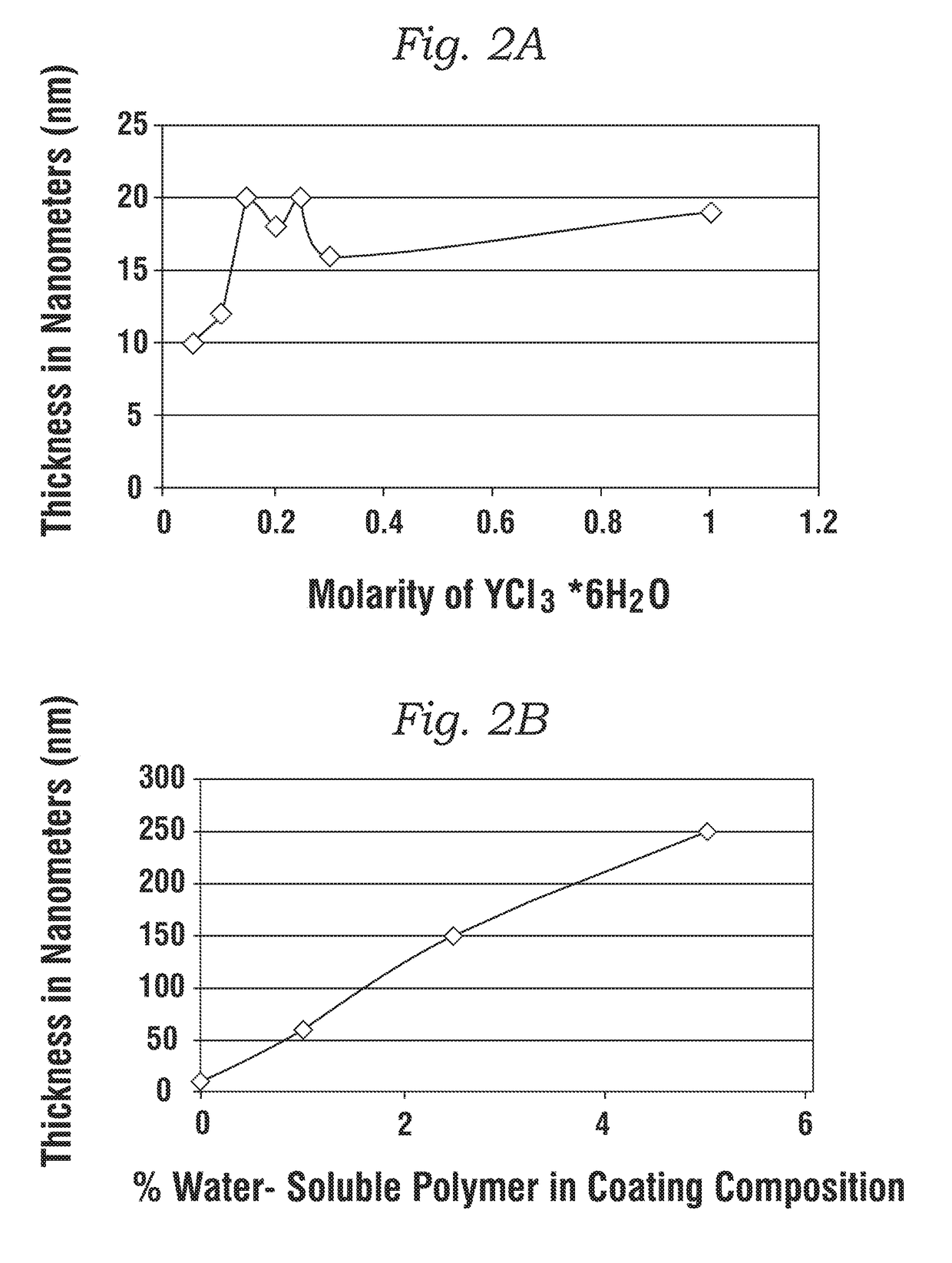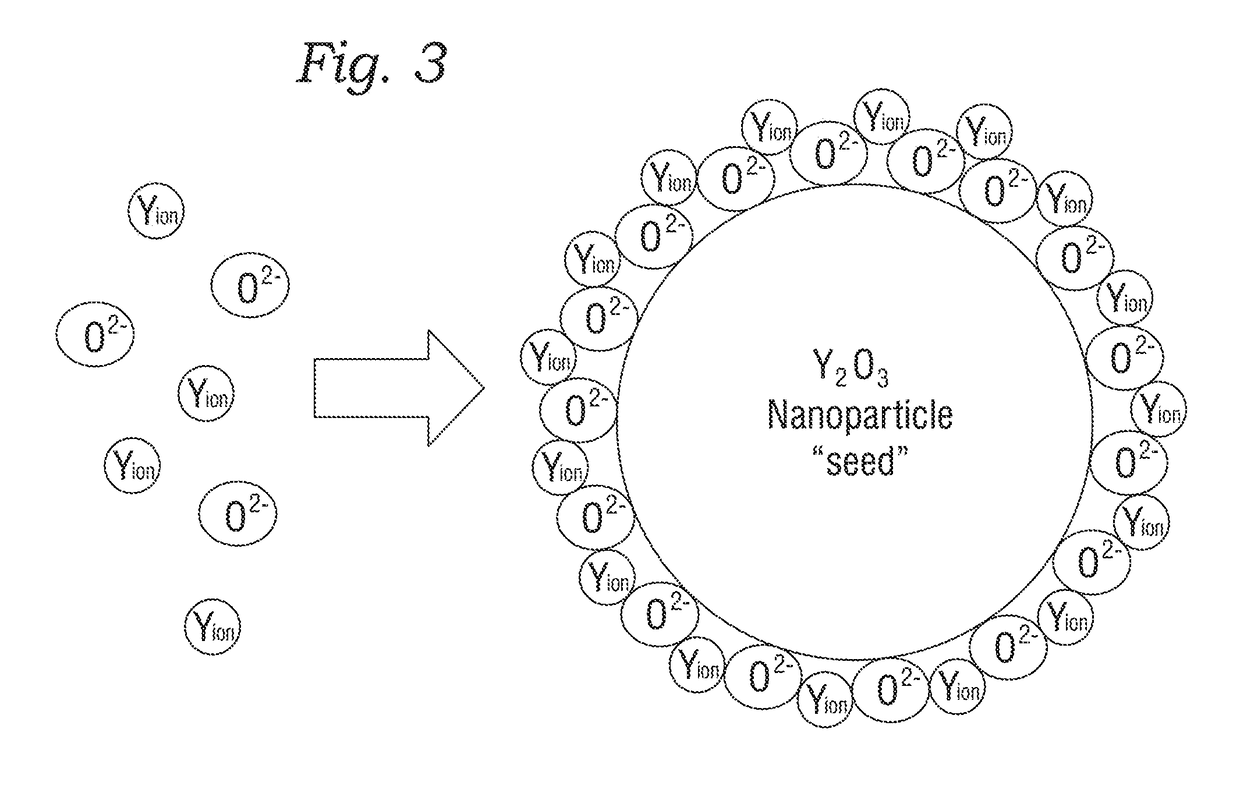Transparent hydrophobic mixed oxide coatings and methods
a mixed oxide coating and transparent technology, applied in the direction of coatings, etc., can solve the problems of fluorinated polymers that are easily degraded by ultraviolet light, lack of abrasion resistance, and both strategies have significant drawbacks, and the coatings of high roughness are often fragile and poorly suited to harsh environments
- Summary
- Abstract
- Description
- Claims
- Application Information
AI Technical Summary
Benefits of technology
Problems solved by technology
Method used
Image
Examples
example 1
[0055]A glass surface was coated with about 5 grams of yttrium acetate dissolved in 200 mL of a 1:2 co-solvent mixture of isopropyl alcohol and de-ionized water. The coated glass substrate was allowed to dry for about 2 hours before being thermally treated at about 500° C. for about 12 hours in ambient atmosphere.
[0056]There is a consensus in the scientific literature that yttrium oxide crystallization proceeds very slowly at temperatures less than 550° C., which is higher than the cure temperature used in this example and beyond the material limits (melting and de-tempering points) of the glass substrate. X-ray diffraction measurements of the coated glass showed peaks consistent with the hydrophobic phase of yttrium oxide. The high peak broadness suggested that, as expected, the yttrium oxide coating was partially amorphous, requiring higher temperatures or longer durations for full cure.
[0057]The resulting coating thickness did not typically exceed 20 nm with this process. With re...
example 2
[0059]About 5 grams of yttrium acetate was dissolved in 300 mL of a 1:2 co-solvent mixture of isopropyl alcohol and de-ionized water and coating composition was doped with about 1% polyvinyl alcohol (PVA) by weight of the coating composition. The PVA readily dissolved in the coating composition and acted to increase its viscosity. The PVA further improved wetting conditions at the surface, which promoted a thicker coating front and increased final wet coating thickness. The PVA-based matrix allowed for higher rare earth atom content at the surface and considerably thicker coatings. After about 2 hours of dry time, the coated substrates were cured at about 500° C. for about 12 hours in an ambient atmosphere. The resulting thickness, determined by surface profilometry, was over 50 nm, far exceeding the 20 nm limit of Example 1.
example 3
[0060]A coating composition was prepared as in Example 2, except PVA content in the coating composition was increased to about 2.5% by weight of the coating composition. After about 2 hours of dry time, the coated substrates were cured at about 500° C. for about 12 hours in an ambient atmosphere. With reference to FIG. 2B, this process resulted in coating thicknesses greater than about 150 nm.
PUM
| Property | Measurement | Unit |
|---|---|---|
| cure temperature | aaaaa | aaaaa |
| cure temperature | aaaaa | aaaaa |
| time | aaaaa | aaaaa |
Abstract
Description
Claims
Application Information
 Login to View More
Login to View More - R&D
- Intellectual Property
- Life Sciences
- Materials
- Tech Scout
- Unparalleled Data Quality
- Higher Quality Content
- 60% Fewer Hallucinations
Browse by: Latest US Patents, China's latest patents, Technical Efficacy Thesaurus, Application Domain, Technology Topic, Popular Technical Reports.
© 2025 PatSnap. All rights reserved.Legal|Privacy policy|Modern Slavery Act Transparency Statement|Sitemap|About US| Contact US: help@patsnap.com



